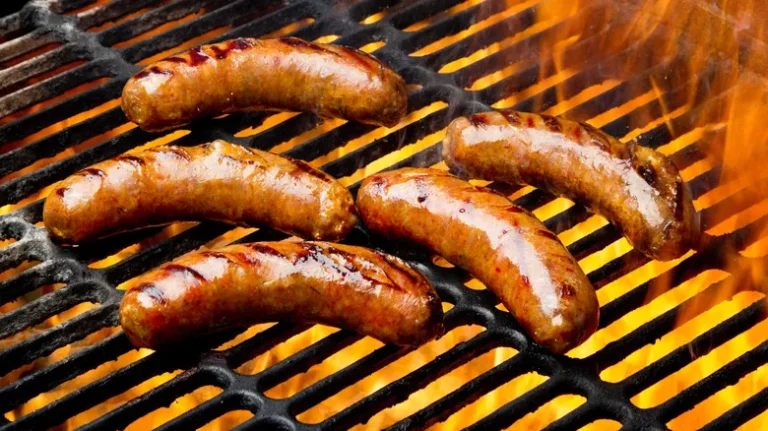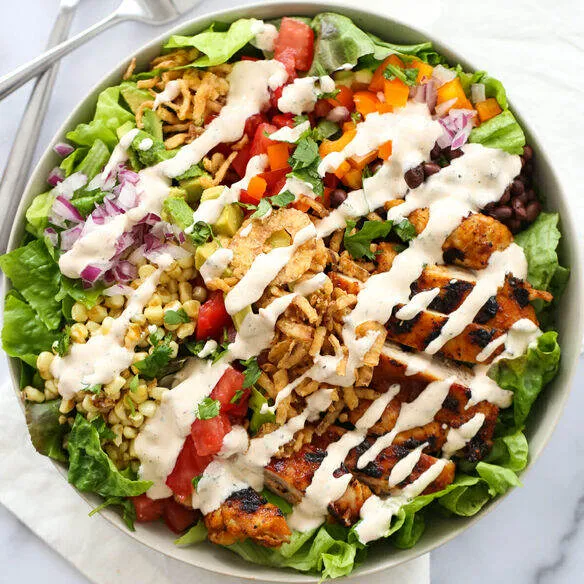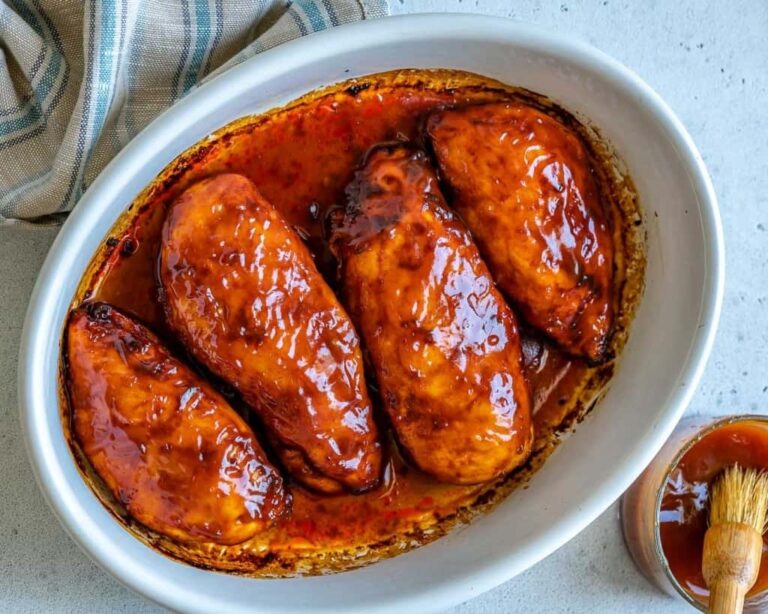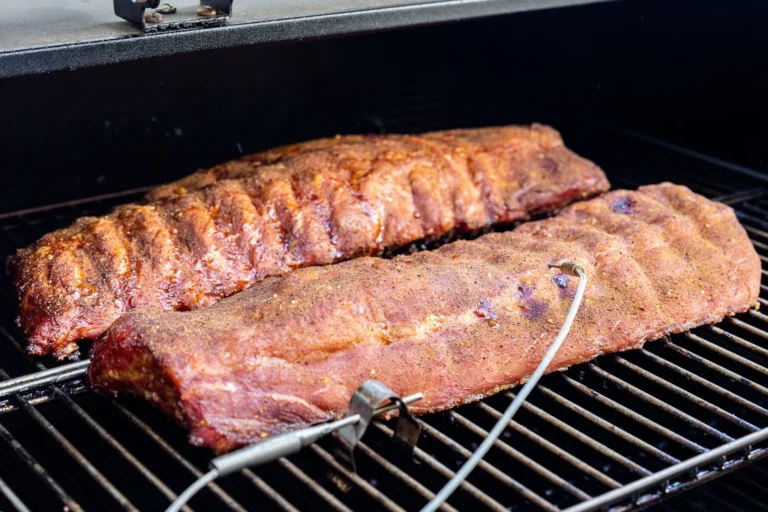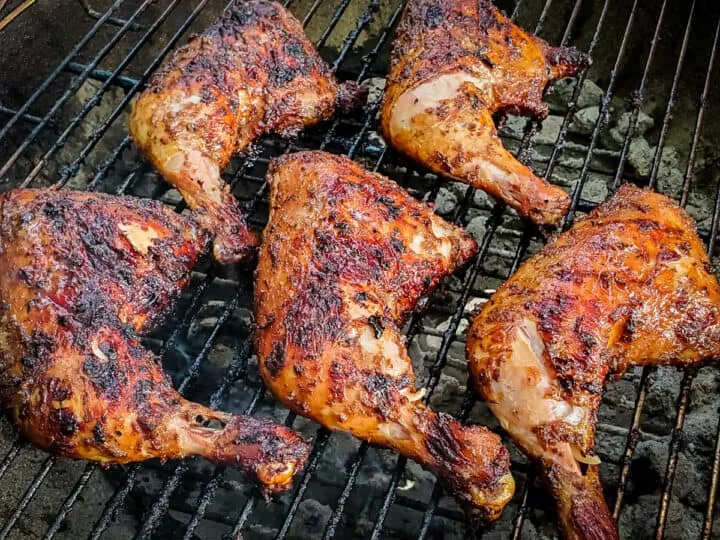How to Can BBQ Sauce – Your Canning Guide
Hey there, BBQ lovers! Welcome to your one-stop guide for canning your very own BBQ sauce. If you’re a fan of that smoky, tangy flavor, then you know nothing beats homemade barbecue sauce. By canning it yourself, you not only lock in that deliciousness but also get the satisfaction of having a pantry full of your custom creation.
In this guide about how to can BBQ sauce, we’ll cover everything from prepping your ingredients to sealing those jars. Whether you’re a canning veteran or just starting out, you’ll be canning BBQ sauce like a pro in no time. Let’s jump in and start making and preserving this tasty sauce!

Why Can Your Own BBQ Sauce?
Canning your own barbecue sauce isn’t just fun—it’s a total game-changer for your kitchen. Here’s why you should give it a try:
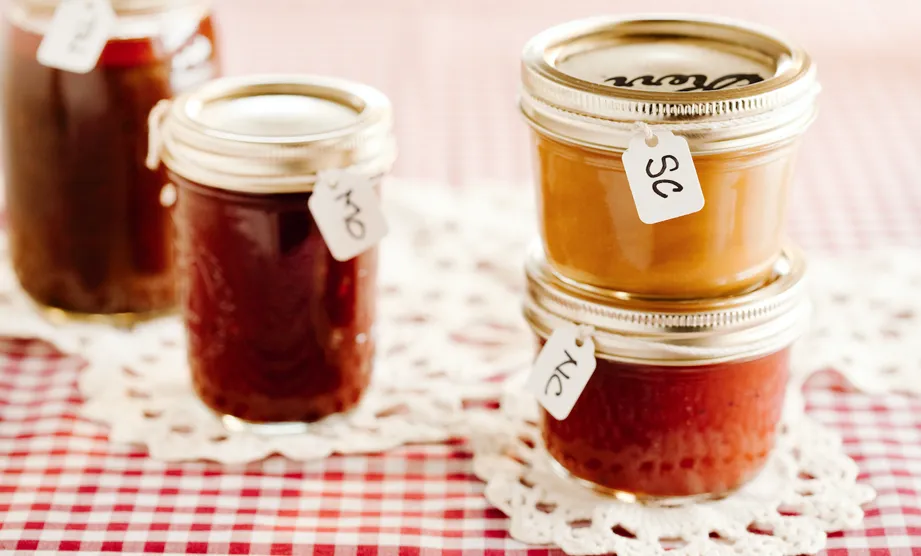
- Flavor Customization: Making your own BBQ sauce means you control the flavor. Want it smokier? Add more liquid smoke. Prefer it sweeter? Increase the honey or brown sugar. Like it spicy? Throw in some extra chili peppers. The possibilities are endless, allowing you to craft the perfect sauce to match your taste.
- No Preservatives: Store-bought sauces often come with preservatives and artificial ingredients to make them last longer. When you can your own sauce, you can ensure it’s pure and natural. You’ll skip the high fructose corn syrup, artificial flavors, and colorings commonly found in supermarket sauces.
- Quality Ingredients: By making your own BBQ sauce, you get to choose top-notch ingredients. Fresh tomatoes, organic spices, and high-quality vinegar can make a huge difference. You know exactly what’s going into your sauce, keeping it as healthy and wholesome as you want.
Ingredients You’ll Need
For the ultimate homemade BBQ sauce, you’ll need a mix of core ingredients and some extras to tweak the flavor to your liking. Here’s what you’ll need:
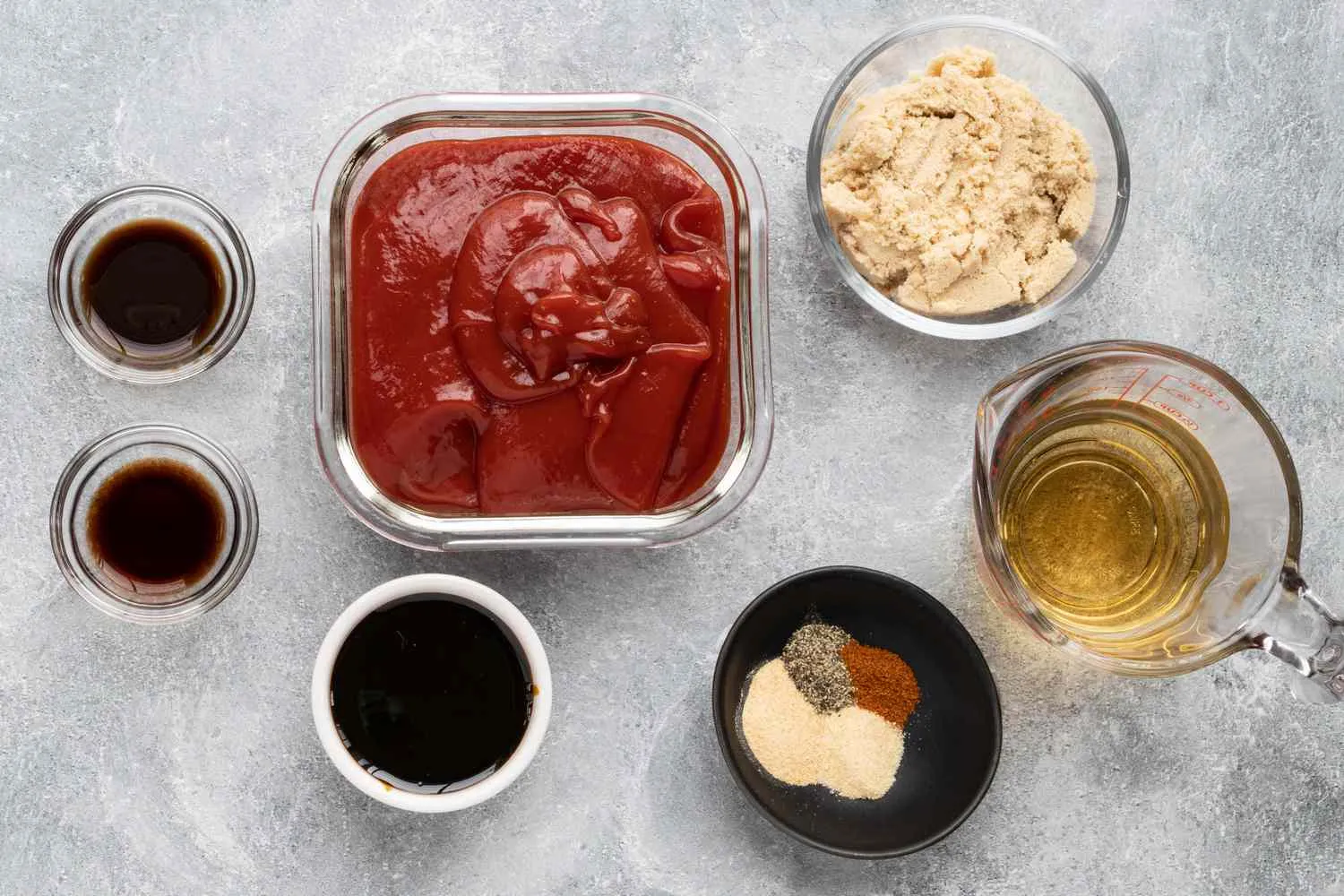
- Fresh tomatoes or tomato paste
- Apple cider vinegar
- Honey or brown sugar
- Liquid smoke
- Spices like paprika, garlic powder, onion powder
- Salt and pepper
- Optional: chili peppers, Worcestershire sauce, mustard
Essential Ingredients
These ingredients are the foundation of your BBQ sauce:
- Tomatoes: Fresh (about 5 pounds) or canned (2 quarts)
- Peppers: 1-2 bell peppers (red or green), finely chopped
- Onions: 1 large onion, finely chopped
- Garlic: 4-5 cloves, minced
- Brown Sugar: 1 cup (for sweetness)
- Molasses: 1/2 cup (adds depth and richness)
- Apple Cider Vinegar: 1 cup (for tanginess)
- Tomato Paste: 1 small can (6 ounces)
- Worcestershire Sauce: 2 tablespoons
- Yellow Mustard: 2 tablespoons
- Salt: 1 tablespoon
- Black Pepper: 1 teaspoon
- Cayenne Pepper: 1/2 teaspoon (adjust to taste)
- Paprika: 2 teaspoons
Additional Flavor Boosters
Personalize your BBQ sauce with these optional ingredients for extra depth and complexity:
- Smoked Paprika: 2 teaspoons (for a smoky flavor)
- Liquid Smoke: 1 teaspoon (adds a robust smoky taste)
- Chiles: Chipotle, jalapeño, or habanero (1-2, finely chopped for heat)
- Honey or Maple Syrup: 1/4 cup (alternative sweeteners)
- Soy Sauce: 2 tablespoons (adds umami)
- Bourbon or Whiskey: 1/4 cup (for a rich, complex flavor)
- Pineapple Juice: 1/2 cup (adds sweetness and a hint of tropical flavor)
- Cumin: 1 teaspoon (adds warmth)
- Ground Cloves: 1/4 teaspoon (for a subtle, spicy note)
- Apple Juice: 1/2 cup (alternative tanginess)
Canning Equipment Needed
To can your homemade BBQ sauce safely and effectively, you’ll need the following tools:\

- Canning Jars: Quart or pint-sized jars designed for canning, without any chips or cracks.
- Lids and Bands: New lids with sealing compound (never reuse old lids) and reusable bands to secure the lids.
- Water Bath Canner: A large pot deep enough to fully submerge your jars in water, with a rack at the bottom to keep jars off the pot.
- Jar Lifter: Special tongs designed for safely lifting hot jars out of boiling water.
- Canning Funnel: A wide-mouth funnel to pour sauce into jars without spilling.
- Bubble Remover/Headspace Tool: A plastic or wooden tool to remove air bubbles and ensure proper headspace in jars.
- Ladle: For transferring the BBQ sauce into jars.
- Clean Towels: For wiping jar rims before sealing and handling hot jars.
- Magnetic Lid Lifter: A tool to lift lids out of hot water without touching them, keeping them sterile.
- Timer: To accurately track processing time.
Optional but Helpful Tools
- Jar Labels Label your jars with the date and type of sauce.
- Cooling Rack Use a rack to cool your jars properly after processing.
- Canning Cookbook or Guide While not equipment, a reliable canning guide or cookbook offers additional tips and recipes.
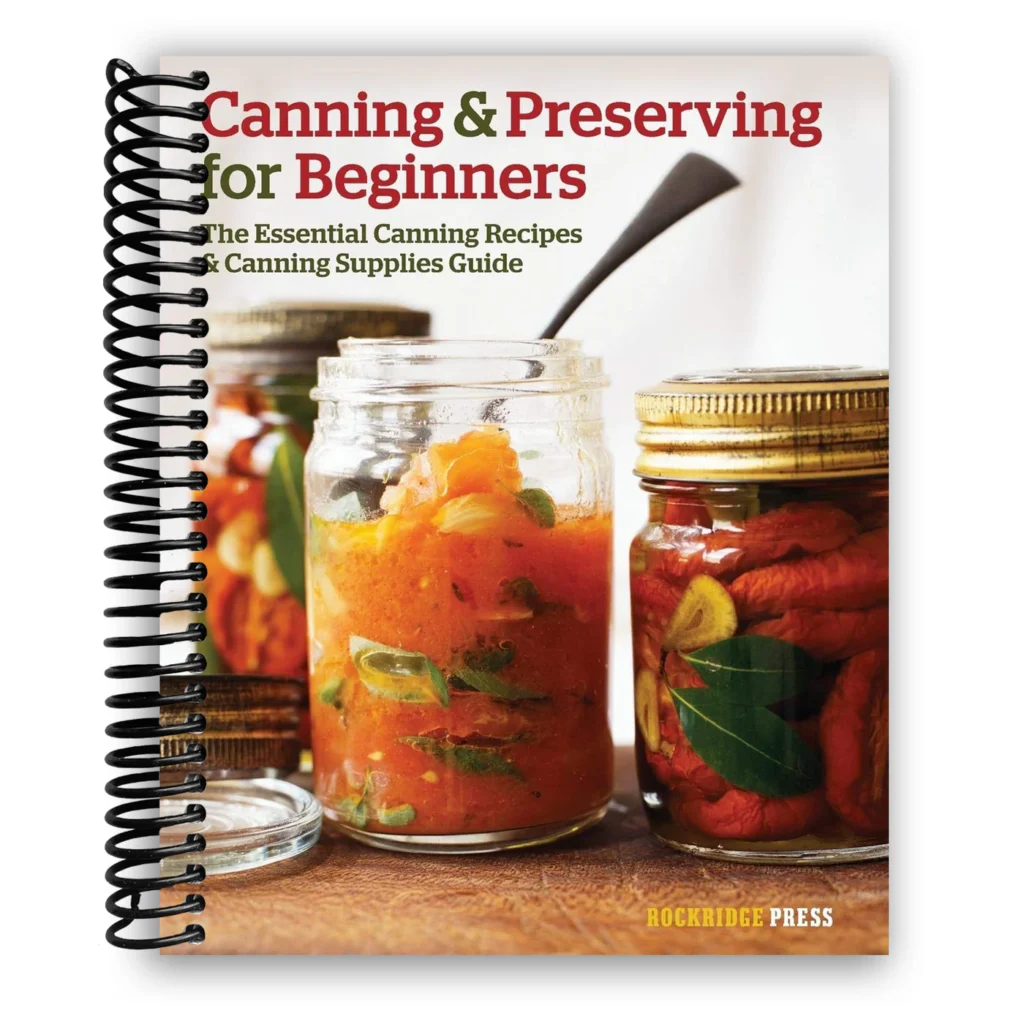
Preparing the Ingredients
Before diving into cooking and canning, it’s crucial to prepare your vegetables and spices correctly. Follow these steps to ensure everything is ready for making your BBQ sauce.
Cleaning and Chopping
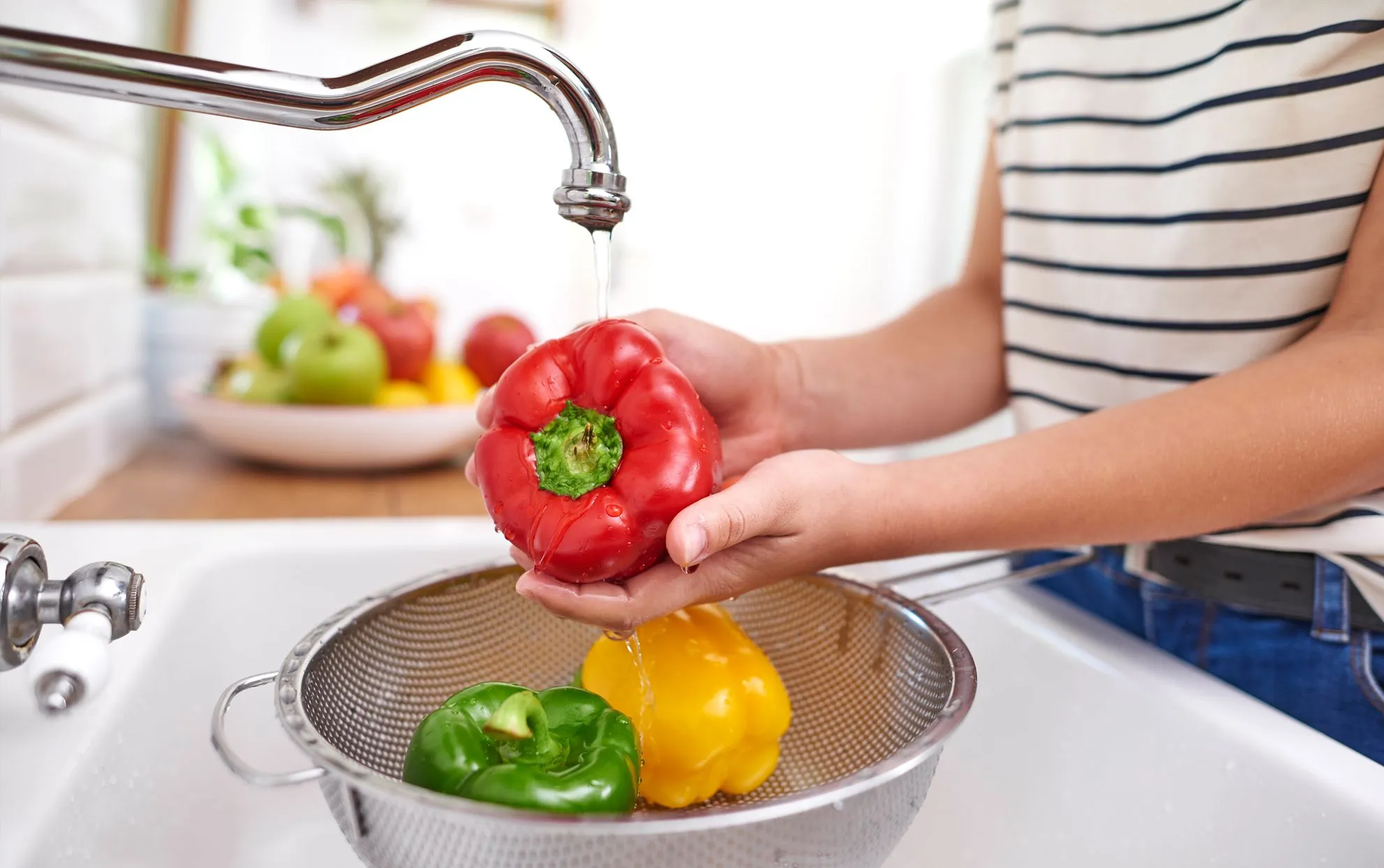
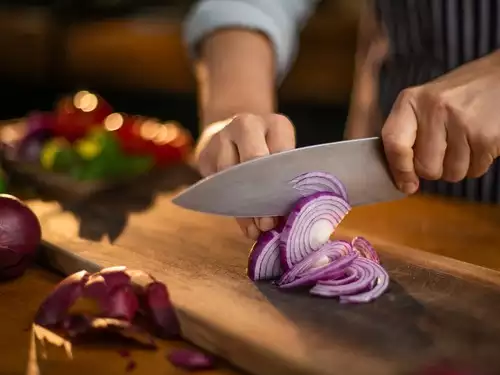
Tomatoes:
- Cleaning: Rinse tomatoes under cold water to remove dirt or pesticides.
- Peeling (optional): For a smoother sauce, blanch tomatoes in boiling water for 1 minute, then transfer to an ice bath. The skins should peel off easily.
- Chopping: Core and chop tomatoes into small pieces. If using canned tomatoes, drain any excess liquid and skip this step.
Bell Peppers:
- Cleaning: Rinse peppers under cold water.
- Chopping: Cut off the tops, remove seeds and membranes, and finely chop.
Onions:
- Cleaning: Remove the outer skin.
- Chopping: Finely chop onions. A food processor can save time and ensure uniform pieces.
Garlic:
- Cleaning: Peel the cloves.
- Chopping: Finely mince the garlic. A garlic press can make this task quicker.
Additional Vegetables (if using):
- Cleaning: Follow the cleaning steps above.
- Chopping: Finely chop any additional vegetables like jalapeños or chiles.
Measuring and Adjustments
Accurate measurement of ingredients ensures the consistency and balance of your BBQ sauce. Here’s how to do it right:
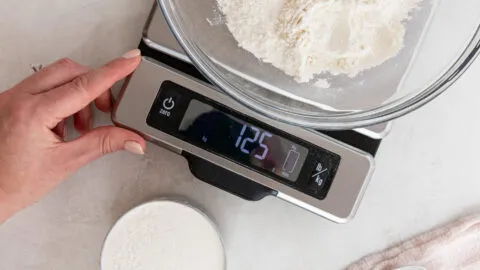
Measuring Dry Ingredients:
- Use dry measuring cups for ingredients like brown sugar and spices. Level off each measurement with a straight edge for accuracy.
- Use measuring spoons for spices, ensuring they are leveled for precise amounts.
Measuring Liquid Ingredients:
- Use liquid measuring cups for ingredients like vinegar, molasses, and juices.
- Pour the liquid until it reaches the desired mark, checking at eye level for accuracy.
Adjusting for Taste:
- Sweetness: Adjust the amount of brown sugar or molasses based on your preference for sweetness.
- Heat: Add more or fewer chiles, cayenne pepper, or hot sauce depending on how spicy you like your sauce.
- Tanginess: Increase or decrease the amount of apple cider vinegar to achieve your desired level of tang.
- Smokiness: Adjust the quantity of smoked paprika or liquid smoke to control the smoky flavor.
Cooking Process
With all your ingredients prepped and ready, it’s time to cook up a batch of rich, flavorful BBQ sauce. Follow this step-by-step guide:
Combining Ingredients
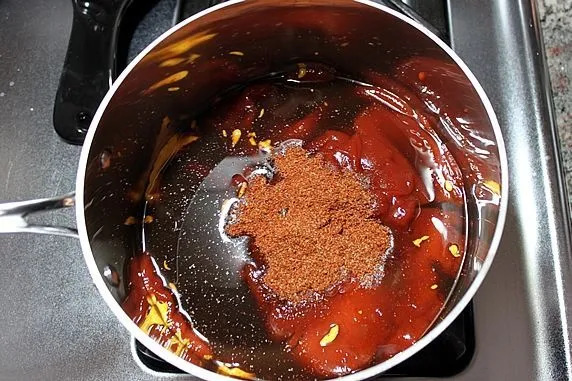
Choose Your Pot: Use a large, heavy-bottomed pot or Dutch oven to prevent sticking and burning.
Heat the Pot: Start by heating the pot over medium heat.
Sauté the Aromatics:
- Add 1-2 tablespoons of oil to the pot.
- Once the oil is hot, add the chopped onions and sauté until they become translucent, about 5-7 minutes.
- Add the minced garlic and chopped bell peppers, sautéing for another 3-4 minutes until softened and fragrant.
Add the Core Ingredients:
- Add the chopped tomatoes (or canned tomatoes) to the pot and stir to combine.
- Mix in the tomato paste, brown sugar, molasses, apple cider vinegar, Worcestershire sauce, and yellow mustard, stirring well.
Season the Sauce: Add the salt, black pepper, cayenne pepper, and paprika, stirring to evenly distribute the spices.
Simmering the Sauce
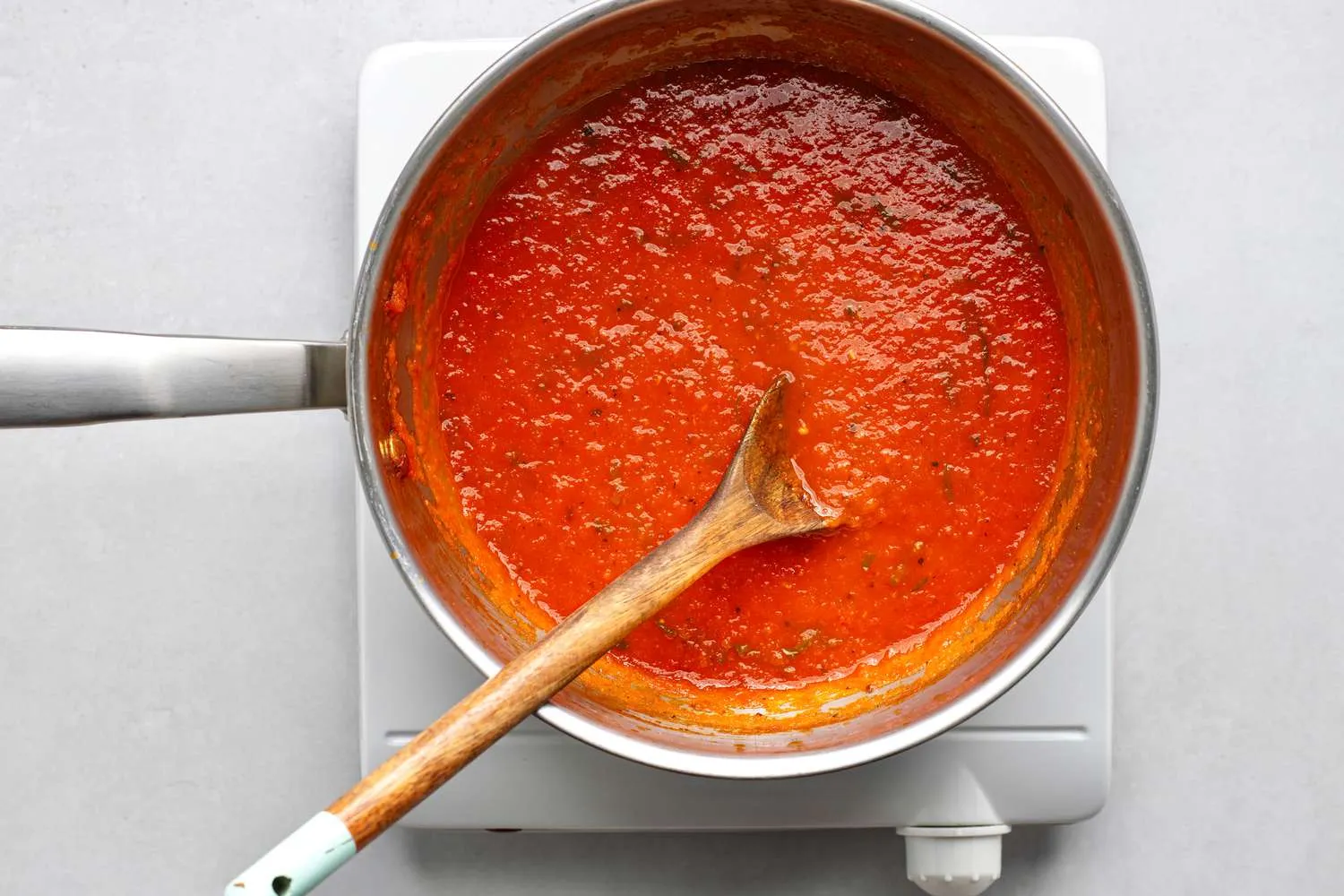
Initial Simmer: Bring the mixture to a gentle boil over medium-high heat, stirring occasionally to prevent sticking.
Reduce the Heat: Once it reaches a boil, lower the heat to maintain a gentle simmer.
Simmering Time:
- Let the sauce simmer uncovered for about 1-2 hours, stirring occasionally.
- If the sauce becomes too thick, add a little water or apple juice to reach your desired consistency.
Adjusting the Flavor:
- Taste the sauce periodically and adjust seasoning as needed by adding more salt, sugar, or vinegar to balance the flavors.
- If you prefer a smoother sauce, use an immersion blender to puree the mixture to your desired consistency.
Final Consistency: The sauce is ready when it thickens to a rich, smooth consistency and coats the back of a spoon without being too runny.
Cooling the Sauce (if needed): If you prefer to can the sauce at a cooler temperature, let it cool slightly before transferring it to jars.
Canning Process
Preserve your homemade BBQ sauce by canning it properly. Follow these steps for safe and effective canning:
Sterilizing the Jars
Prepare Your Equipment:
- Gather your canning jars, lids, and bands, inspecting them for any cracks or chips.
Wash the Jars:
- Clean the jars, lids, and bands in hot, soapy water and rinse them thoroughly.
Sterilize the Jars:
- Place the jars in a large pot or water bath canner, covering them with water.
- Bring the water to a boil and let the jars boil for at least 10 minutes to sterilize them.
- Keep the jars hot until you are ready to fill them.
Prepare the Lids:
- Put the lids in a small saucepan and cover them with water.
- Heat the water to just below boiling (simmer) and keep the lids in hot water until ready to use. This helps soften the sealing compound.
Filling the Jars

- Remove Jars from Water: Use a jar lifter to carefully take the sterilized jars out of the hot water. Place them on a clean towel or rack.
- Fill the Jars: Place a canning funnel in each jar and ladle the hot BBQ sauce into the jar, leaving about 1/2 inch of headspace at the top. Use a bubble remover or a non-metallic utensil to remove air bubbles by gently sliding it down the sides of the jar.
- Clean the Jar Rims: Wipe the rims of the jars with a clean, damp cloth to remove any sauce residue that might interfere with sealing.
- Apply Lids and Bands: Use a magnetic lid lifter to place a hot lid on each jar. Screw on the bands until they are fingertip-tight (do not over-tighten).
Processing the Jars

Prepare the Water Bath Canner:
- Fill the canner with enough water to cover the jars by at least 1 inch. Begin heating the water.
Place the Jars in the Canner:
- Carefully use the jar lifter to place the filled jars into the canner. Ensure the jars are not touching each other.
Process the Jars:
- Once all the jars are in the canner, bring the water to a full rolling boil.
- Process pint jars for 20 minutes and quart jars for 30 minutes. Adjust the processing time if you are at a higher altitude (consult a canning guide for specific adjustments).
Remove and Cool the Jars:
- After the processing time is complete, turn off the heat and carefully remove the canner lid. Let the jars sit in the water for 5 minutes.
- Use the jar lifter to remove the jars from the canner and place them on a towel or cooling rack. Allow the jars to cool undisturbed for 12-24 hours.
Check the Seals:
- Once the jars are completely cool, check the seals by pressing down on the center of each lid. If the lid does not pop up, the jar is sealed properly. Any jars that did not seal should be refrigerated and used within a few weeks.
Store the Jars:
- Label the jars with the date and contents. Store them in a cool, dark place.
After Canning
With your BBQ sauce safely canned, it’s essential to store it properly and ensure that the seals are intact for long-term preservation. Here’s how to keep your sauce in top shape:
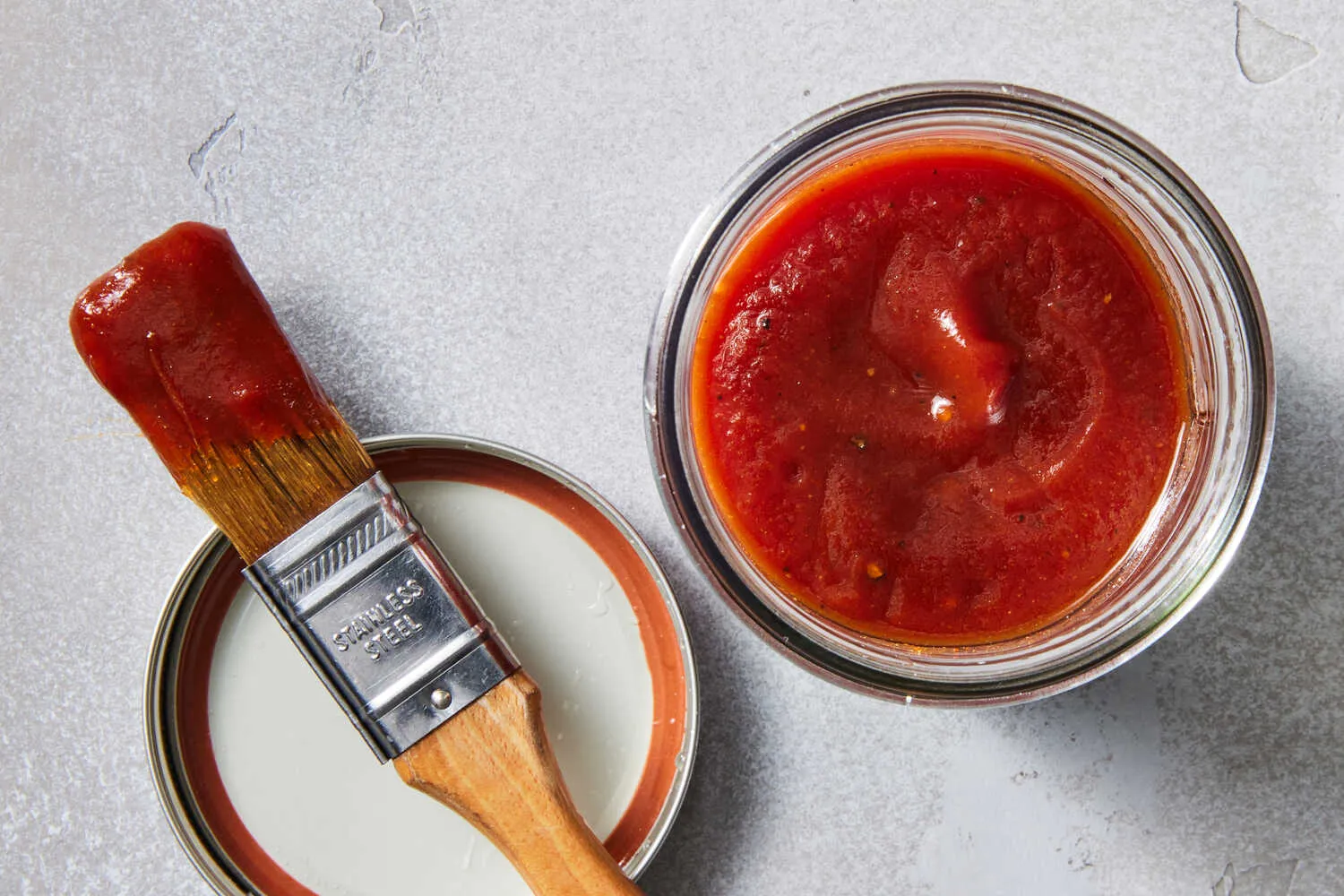
Storing the Canned BBQ Sauce
Cool and Dry Place:
- Store your canned BBQ sauce in a cool, dark, and dry place like a pantry, cupboard, or basement. The ideal storage temperature is between 50°F and 70°F (10°C to 21°C).
Avoid Direct Sunlight:
- Keep the jars away from direct sunlight, as exposure to light can degrade the quality and color of the sauce over time.
Check for Moisture:
- Ensure that the storage area is not too humid. Excessive moisture can cause the lids to rust and compromise the seals.
Labeling:
- Label each jar with the date of canning and the type of sauce. This helps you track how long the sauce has been stored and ensures you use the oldest jars first.
Checking for Proper Seals
Cooling Period:
- Allow the jars to cool undisturbed for 12-24 hours after processing. This cooling period is crucial for the seals to form properly.
Visual Inspection:
- Once the jars have cooled, inspect the lids. A properly sealed lid will be concave (curved inward) and should not move when pressed in the center.
Seal Test:
- Press down on the center of each lid. If the lid does not pop up, the jar is sealed correctly. If it does pop up, the jar did not seal properly and should be refrigerated and used within a few weeks.
Tapping Test:
- Tap the lid with the back of a spoon. A properly sealed jar will produce a high-pitched, ringing sound, while an unsealed jar will produce a dull sound.
Reprocessing (if necessary):
- If any jars did not seal properly, you can reprocess them within 24 hours. Remove the lids, check the rims for any food particles or damage, clean the rims, use new lids, and reprocess using the same method.
Long-Term Storage Tips
Shelf Life:
- Properly canned BBQ sauce can last up to one year. For the best flavor and quality, aim to use it within this timeframe.
Regular Checks:
- Periodically inspect your stored jars for signs of spoilage, such as bulging lids, leaking, or off smells. Discard any jars showing these signs.
Rotate Stock:
- Use the “first in, first out” method to ensure you use your oldest jars first, keeping your stock fresh.
Creative Ways to Use Canned Sauce
Your homemade BBQ sauce isn’t just for ribs and chicken. Here are some creative ways to elevate your meals with this flavorful condiment:
BBQ Pulled Pork Sandwiches:
- Slow-cook a pork shoulder with your BBQ sauce until tender and shreddable. Pile it high on a bun with coleslaw for a classic sandwich.
Grilled BBQ Pizza:
- Use your sauce as the base for a delicious grilled pizza. Top with chicken, red onions, and cilantro for a BBQ chicken pizza that’s sure to impress.
BBQ Meatloaf:
- Add a smoky twist to your meatloaf by mixing some BBQ sauce into the meat mixture and glazing the top with more sauce before baking.
BBQ Baked Beans:
- Stir your BBQ sauce into a pot of baked beans for a rich, tangy flavor that pairs perfectly with any cookout.
BBQ Chicken Tacos:
- Toss shredded chicken in your sauce and serve it in warm tortillas with fresh salsa, avocado, and a squeeze of lime.
BBQ Salad Dressing:
- Mix BBQ sauce with olive oil and a bit of vinegar to create a unique and flavorful salad dressing.
BBQ Shrimp Skewers:
- Marinate shrimp in BBQ sauce and grill them on skewers for a quick and tasty appetizer or main dish.
Looking for more sauce recipes? Check out our Hot BBQ Sauce to add some heat to your collection.
Troubleshooting Common Canning Issues
Even experienced canners can encounter problems. Here’s how to handle some common canning issues:
Jar Sealing Failures
Improper Sealing:
- Cause: Food residue on the jar rim, old or defective lids, or not enough processing time.
- Solution: Ensure rims are clean before sealing, use new lids, and follow processing times accurately. If jars don’t seal, refrigerate and use within a few weeks or reprocess within 24 hours with new lids.
Band Too Tight or Too Loose:
- Cause: Bands that are too tight can prevent air from escaping during processing; too loose can cause lids to not seal properly.
- Solution: Tighten bands to fingertip tightness, ensuring they are secure but not overly tight.
Sauce Separation
Separation During Storage:
- Cause: Natural separation can occur, especially if the sauce wasn’t cooked long enough or blended well.
- Solution: Shake the jar before using to recombine the ingredients. Ensure thorough cooking and blending next time.
Thickening Issues:
- Cause: Sauce may be too thin due to insufficient simmering time.
- Solution: Simmer sauce longer until it reaches the desired consistency. You can also add a thickening agent like tomato paste.
Spoilage
Off Smell or Appearance:
- Cause: Contamination during canning or improper storage.
- Solution: Discard any jars with off smells, colors, or signs of mold. Ensure proper canning techniques and storage conditions.
Bulging Lids:
- Cause: Gas formation from spoilage organisms.
- Solution: Do not consume. Discard the entire jar and contents. Review canning procedures for possible errors.
FAQs
Disclosure: Our blog contains affiliate links to products. We may receive a commission for purchases made through these links. However, this does not impact our reviews and comparisons. We try our best to keep things fair and balanced, in order to help you make the best choice for you.

